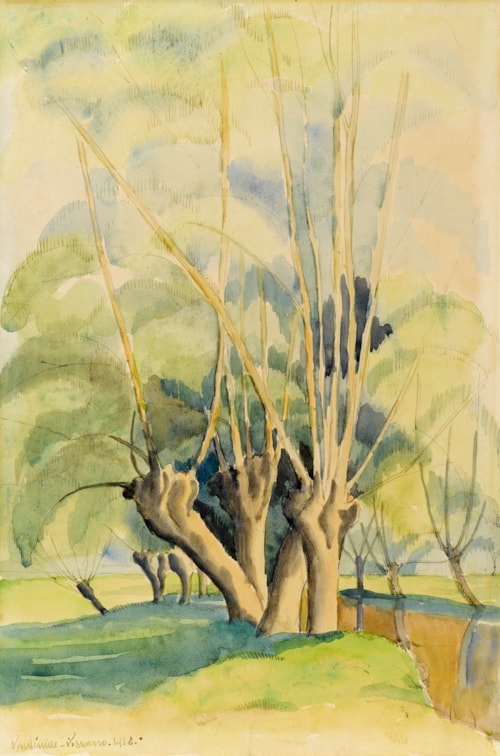
Paul-Émile PISSARRO
Eragny 1884 - Clécy 1972
Biography
The fifth and final child of Camille Pissarro and Julie Vellay, Paul-Émile (or Paulémile, as he preferred to sign his work) Pissarro was nineteen years old when his father died in 1903. As a young boy he had accompanied his father on painting trips, and after his death took painting lessons with his godfather, Claude Monet, with whom he was to remain close. Although he exhibited a landscape painting at the Salon des Indépendants in 1905, he initially felt unable to support himself as an artist, and in 1908 reluctantly began training to become a car mechanic, and later worked as a designer of textiles and lace. The sale of some of his watercolours, however, encouraged him to devote himself to painting full time.
By the 1920’s he was sharing a studio with Kees van Dongen in Paris, and spending the summer months travelling with van Dongen, Raoul Dufy and Maurice de Vlaminck. A gifted landscape painter, Paul-Émile also experimented with printmaking, producing a number of wood engravings and etchings. He exhibited frequently at the Salon des Indépendants, the Salon des Tuileries and the Salon d’Automne. With the support of his brother Lucien, who lived in London, he also showed his work at the New English Art Club, the Baillie Gallery and the Allied Artists Association. In 1924 he settled in Lyons-la-Fôret, a small town near his birthplace of Eragny-sur-Epte, where he painted the landscape around the Epte river. In 1935 he moved to Clécy, a village on the river Orne in the Calvados region of northwest France, where he remained until his death. The success of his first one-man exhibition in America, at the Wally Findlay Galleries in New York in 1967, provided the artist with considerable recognition and financial rewards in the later years of his career.


